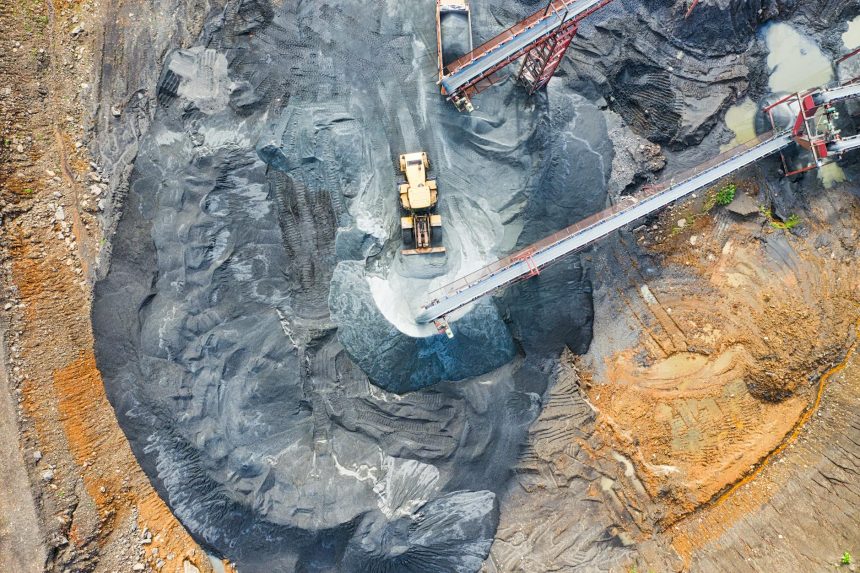Battery Technology Dominance: 5 Ways Nations Are Fighting China’s Lead
The global energy transition hinges on advanced battery storage, powering everything from electric vehicles to grid-scale solutions. Yet, a significant challenge looms: the concentrated control over critical minerals and manufacturing capabilities that define Battery Technology Dominance. As one nation consolidates its lead in this crucial sector, the world grapples with potential supply chain vulnerabilities and strategic dependencies. This article explores the landscape of battery technology, the implications of concentrated power, and the proactive steps being taken to foster a more resilient and diversified future.
Understanding Battery Technology Dominance: The Global Landscape
What is Battery Technology Dominance?
Battery Technology Dominance refers to a nation’s overwhelming influence and control over the entire value chain of advanced battery production. This includes access to raw materials like lithium and cobalt, sophisticated refining and processing capabilities, cutting-edge research and development, and large-scale manufacturing capacity. It’s a strategic advantage that impacts economic competitiveness, national security, and the pace of global decarbonization.
The Pivotal Role of Rare-Earth Minerals in Battery Production
Rare-earth minerals, along with other critical elements such as lithium, cobalt, and nickel, are indispensable components in modern battery chemistries, especially lithium-ion cells. These materials are not “rare” in geological terms but are often found in low concentrations and require complex, environmentally intensive processing. The control over their extraction, refining, and supply chain logistics is a cornerstone of any nation’s aspirations for technological leadership in energy storage.
China’s Strategic Lead in Battery Technology Dominance
How China Forged its Battery Technology Superiority
China’s ascent to Battery Technology Dominance is the result of decades of strategic foresight, massive government investment, and a coordinated industrial policy. Beginning in the early 2000s, Beijing identified new energy technologies as a national priority, pouring resources into R&D, manufacturing subsidies, and securing access to critical raw materials globally. This long-term vision allowed Chinese companies to develop unparalleled expertise across the entire battery supply chain.
Key Pillars of China’s Battery Technology Advantage
China’s formidable position stems from several interconnected strengths:
- Unrivaled Manufacturing Capacity: Chinese firms produce the vast majority of the world’s lithium-ion batteries, often at lower costs due to economies of scale and efficient supply chains. This includes both EV batteries and stationary storage solutions.
- Leading Raw Material Processing: While not always the primary extractor of raw materials, China dominates the refining and processing of critical minerals like cobalt and graphite, making it an indispensable link in the global supply chain.
- Robust Research & Development: Significant investments in academic institutions and corporate R&D have fueled continuous innovation, leading to advancements in battery performance, safety, and longevity.
- Integrated Supply Chain: China has meticulously built an integrated ecosystem, from mining to cell production to battery recycling, creating a self-reinforcing advantage.
The Geopolitical Ramifications of Concentrated Battery Power
Supply Chain Vulnerabilities and Economic Security
The concentration of battery production and critical mineral processing in one country creates significant vulnerabilities for global industries. Automotive manufacturers, consumer electronics companies, and renewable energy developers worldwide are heavily reliant on this single source. Any disruption—be it geopolitical tension, trade disputes, or natural disasters—could cripple these sectors, impacting economic stability and growth. This dependency underscores the urgent need for supply chain resilience.
National Security Concerns and Strategic Competition
Beyond economic implications, Battery Technology Dominance carries profound national security weight. Batteries are essential for military applications, advanced weaponry, and critical infrastructure. A dependency on a potential rival for such a foundational technology can compromise a nation’s strategic autonomy and influence global power dynamics. The race for technological leadership in this sector is, therefore, a key arena for strategic competition among major global powers.
Countering Battery Technology Dominance: A Global Imperative
Nations worldwide are recognizing the risks and implementing multi-faceted strategies to challenge and diversify the global battery landscape.
Diversifying Raw Material Sourcing and Processing
A core strategy involves reducing reliance on single sources for critical minerals. This includes:
- Exploring New Domestic and Allied Mines: Investing in new mining projects in geopolitically stable regions.
- Developing Advanced Recycling Technologies: Recovering valuable materials from end-of-life batteries to create a circular economy.
- Researching Alternative Battery Chemistries: Exploring technologies that use more abundant materials, such as sodium-ion or solid-state batteries, to lessen dependence on current critical minerals.
Investing in Domestic Innovation and Manufacturing Capacity
Building robust domestic battery industries is paramount. This involves a coordinated effort across government, academia, and industry:
- Increased R&D Funding: Government grants and private sector investments are crucial for developing next-generation battery technologies and improving existing ones.
- Skilled Workforce Development: Educational programs and vocational training are needed to cultivate the engineers, scientists, and technicians required for battery manufacturing and research.
- Infrastructure Investments: Establishing giga-factories and processing plants with supportive infrastructure to scale up domestic production efficiently.
- Incentivizing Private Sector Growth: Tax credits, subsidies, and regulatory frameworks that encourage companies to invest in domestic battery production and innovation.
For example, the U.S. Department of Energy plays a significant role in funding advanced battery research and development, aiming to bolster domestic capabilities. You can learn more about their initiatives here: U.S. Department of Energy – Advanced Batteries.
Forging International Partnerships and Alliances
Collaboration among like-minded nations is vital to create resilient, diversified supply chains. This includes:
- Joint Research Initiatives: Pooling resources and expertise to accelerate breakthroughs in battery technology.
- Supply Chain Agreements: Establishing agreements to ensure stable access to critical minerals and processed materials among allies.
- Standardization Efforts: Collaborating on technical standards to facilitate interoperability and reduce barriers to trade.
Global scientific journals often publish cutting-edge research on these topics, providing a platform for international collaboration. For instance, articles in Nature Journals on Batteries frequently highlight advancements from diverse research groups worldwide.
The Future of Global Battery Technology: A Race for Innovation
Emerging Battery Chemistries and Technologies
The landscape of battery technology is constantly evolving. Researchers are exploring novel chemistries like solid-state batteries, which promise higher energy density and improved safety, and sodium-ion batteries, which utilize more abundant and less costly materials than lithium. These innovations offer pathways to reduce reliance on specific critical minerals and diversify future energy storage solutions.
Sustainable and Ethical Sourcing Practices
As the demand for batteries surges, the importance of sustainable and ethical sourcing of raw materials becomes paramount. Efforts are underway to implement stricter environmental regulations, improve labor conditions in mining communities, and develop robust traceability systems. A truly resilient battery supply chain must also be responsible and transparent.
Accelerating the Clean Energy Transition
Ultimately, the global competition for Battery Technology Dominance is intertwined with the urgent need to accelerate the clean energy transition. Diversified and secure battery supply chains are not just about economic and national security; they are fundamental to deploying renewable energy on a massive scale and achieving global climate goals. Collaborative efforts and sustained innovation will be key to unlocking a sustainable energy future for all.
The pursuit of Battery Technology Dominance is a defining geopolitical and economic challenge of our era. While China has established a formidable lead, the global response is gaining momentum, focusing on diversification, domestic innovation, and international collaboration. The future of energy security, economic prosperity, and the clean energy transition hinges on successfully navigating this complex landscape.
What steps do you believe are most crucial for fostering a diversified and secure global battery supply chain? Share your insights and perspectives in the comments below!







